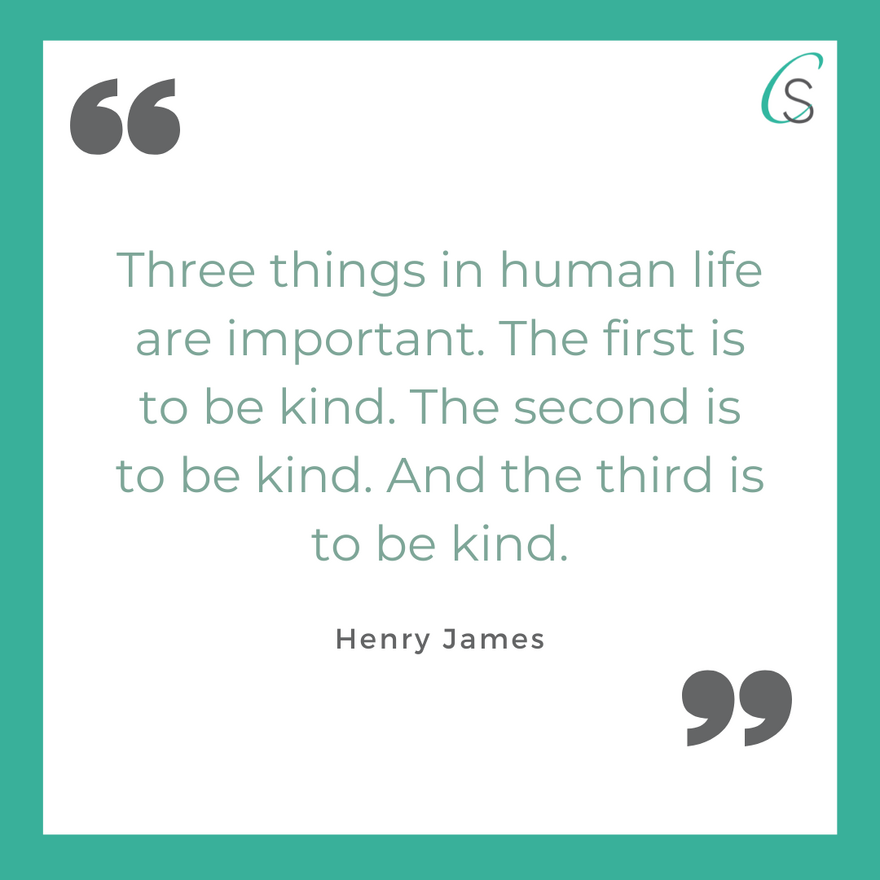
As fascinating as I find the scholarship on persuasion and consumer behavior, I’ve learned far more about psychology from novelists than from social scientists.
The great American writer Henry James stands out among these timeless mentors, and a quote from him sums up much of my personal theory of communication:
“Three things in human life are important. The first is to be kind. The second is to be kind. And the third is to be kind.”
In this statement, the simplicity of the language speaks volumes. James doesn’t say it’s important to be courteous or considerate or compassionate. He doesn’t talk about empathy or emotional intelligence, terms that have become so trendy as of late. Instead of reaching for a sophisticated term originating in a European or ancient Mediterranean language, he goes back to basics, back to a plain word with Anglo Saxon roots: kind.
Now, James did not become famous on grounds of simplicity. On the contrary, to immerse yourself in the complexity of his characters’ minds requires careful, effortful reading. Fascinated by the inner workings of human consciousness, James tended to create sentences that sprawl across the page, often requiring idiosyncratic punctuation. Even by late nineteenth-century standards, the price of admission to the inner worlds he paints is high.
Yet how does James answer the profound question, “What is the secret to life?” By crafting three short, unJamesian sentences and stressing a single syllable: kind.
That ordinary word conveys, I think, layers of meaning. As James would surely have known, it derives from the Old English root that gives us kin. To act with kindness means more than to respect social niceties or even follow the Golden Rule. It means to treat those we meet as family, to operate on a principle of universal kinship.
In our fondness for neologisms, we seem to quest perennially after alternatives to express this concept of shared humanity. In the past couple of decades, we’ve reached for the Buddhist term of “lovingkindness,” the pseudo-scientific notion of “emotional intelligence,” and the African attitude of ubuntu. Such attempts to expand the vocabulary of compassion ignore, however, the richness that English already possesses in “kindness.”
When I’m coaching clients on how to communicate effectively with their audience, I encourage them to find “connection points,” shared interests, beliefs, and feelings they can tap into to build rapport and trust. Such instances of common ground are really just opportunities to recognize kinship. When you show your audience that you see them as fellow humans, rather than pawns in the game of achieving your goals, you practice kind communication.
When we strip communication down to its basics, kindness—in the sense that Chaucer or the author of Beowulf would understand the word—is the essential element. Kind communication consists of language and visuals that foster a sense of kinship and pulls the audience into genuine connection with us. And that authentic, human bond forms the starting point for any business relationship worth having.
Ready to apply these communication insights? Book a coffee chat with Dawn to start the ideas percolating.


Comments